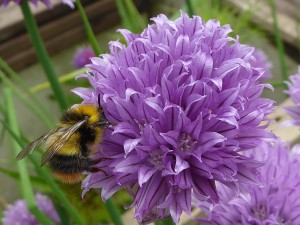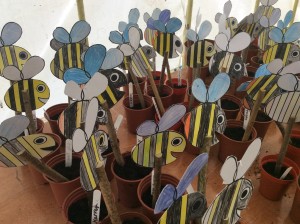Bees are very special insects. They are fascinating to learn about and it is simple to do a few things to help bees in your local area. Did you know there are over 250 species of bee in the British Isles? Most of these are solitary bees, with 24 species of bumblebee and just 1 honeybee.
A buzzing bee is a familiar sound of summer but troublingly they are in fact in decline. Bees along with other insects such as butterflies, moths, hoverflies, wasps and beetles are essential for pollinating our crops such as fruit and vegetables as well as trees and wild flowers.
However, people are often unaware of how incredibly important they are. When asked ‘why do we need bees?’, a common reply from adults and children is that they think that bees just give us honey.
Here are some activity ideas focused on bumblebees to raise awareness and take action to help our buzzy friends out.
The Big8 ‘I-spy’ hunt: There are eight species of bumblebee that are common across the UK. Download your Big8 ID guide here. Use this fun guide to help encourage groups to look for and observe the differences between each species: tail colour; number of yellow bands / stripes; gingery or almost black.
Did you know? – bees have different length tongues (called a proboscis) to feed on different types of flowers.
Bee friendly flowers: Observe the colour and shape of flowers the bees are visiting. For example: long tubular flowers of foxgloves and honeysuckle attract long-tongued bees; whilst short-tongued bees such as the distinctive red-tailed bumblebee, will visit a wide range of flowers particularly yellow ones.
Get that buzz: Plant pots for pollinators – even small additions to gardens provide a much-needed nectar source (sugar) for energy, while pollen provides the protein. Visit Bumblebee Conservation Trust for information about choosing a variety of bee friendly flowers that will attract pollinators all year-round. Also check out Bee Kind to find out how bee friendly your garden is.
Did you know? Worker bees are always female and can be identified by the little baskets of pollen they carry on their back legs.
Hairy bee legs: Imagine you are a bumblebee and use a cotton bud as your ‘hairy bee leg’ and visit a variety of flowers to collect pollen. The yellow pollen sticks to the end of the cotton bud and is also fun way to investigate the different shape of flowers.
Buzzy Bee on a stick: This is a great closing activity where groups are invited to colour in a bumblebee template of their favourite bee species which can be attached to a short stick. Younger children enjoy taking their finished bee on an adventure.
Older children can be encouraged to take action by writing a pollinator pledge on the back: grow bee friendly plants; create a bee friendly space – an area of long grass, undisturbed compost heap and log piles for hibernation sites for bumblebees; give bees a drink; not to use pesticides. Check out The Bee Cause for more information and ideas.
Choose local honey: Support your local bee keepers and honeybee populations by buying local honey. New Forest heather honey is delicious!


